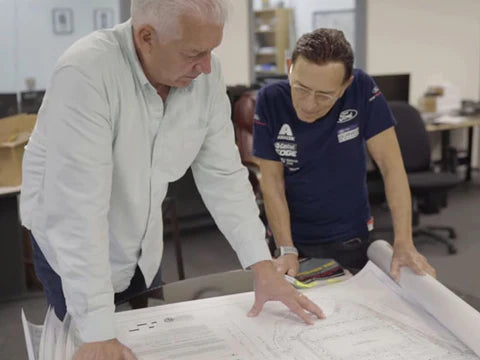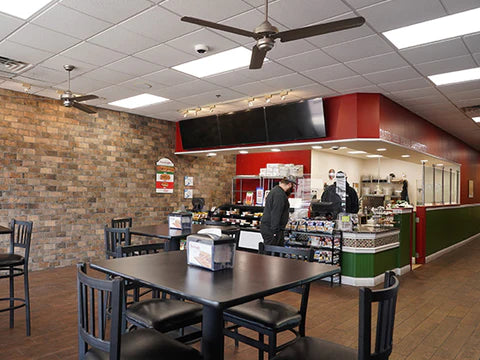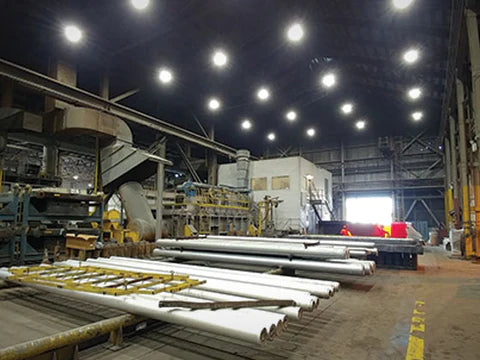LED Tubes: What Makes One Better Than Another?
With so many different LED tube offerings available and prices finally starting to bottom out, how is one to know which tubes are best and what makes any one grade of tube better than another? Many buyers will first look at the number of lumens a tube provides which, at least implicitly, establishes a "brightness-per-buck" ratio. Others may focus on luminous efficacy, the number of lumens per watt, as an important benchmark for estimating energy savings vs. illumination requirements. While they're good starting points, total lumens and luminous efficacy only tell part of the story. There are a number of other very important factors that affect brightness, efficiency, and tube life that should always be considered before making a purchase. Without getting overly technical, the following are some quick guidelines to follow to truly determine if you're getting the best value for your dollar.
LEDs are rated to operate within a specified current range. The LED driver circuitry, which is internal in most all LED tubes, ensures that current is maintained within that range despite changes in voltage or temperature. If the current is too low, the LED won't perform to its full capability. If the current is too high the LED's brightness will increase for some time, but the LED will overheat and rapidly degrade, ultimately burning out well before its rated life expectancy. As prices for LED tubes have dropped, a cheap way for a manufacturer to increase a tube's lumen output, without changing or adding more LEDs (aka increasing cost), is to "over-drive" the LEDs with a current at or slightly above its recommended operating range by using a different driver. This shortcut will result in a shorter tube life and can usually be detected by a shorter (1-3 year) warranty.
When evaluating LED tubes, the first thing to do after looking at the total number of lumens and luminous efficacy is to try to determine the total number of LEDs that are being used to deliver that lumen output. A few LED tube suppliers (ELEDLIGHTS included) will provide this information in their tube specifications. Many will not because they probably don't want you to know. In simplest terms, while more LEDs will sometimes mean a brighter tube, it always means that each LED will require less current (and share a smaller workload) in illuminating the tube. The design of a competitively-priced, high-quality, long-lasting tube is a delicate balancing act between desired lumen output, LED quantity, driver current, and component (LED and driver) quality.
For example, in our random online search for low cost LED tubes we discovered a number of low cost tubes in the $7-$9 price range. If they weren't low lumen (< 1700 LM) or low wattage (< 18W) they were usually less than 4000K (warm white) and, in most cases, were only warranted for 1 year. Color temperature is sometimes another consideration as the most popular LED tubes are typically 5000K (natural white) or 6000K (cold white). On the other hand, ELEDLIGHTS lowest-cost 4 ft. LED tubes provide more than 2000 lumens of 6000K cold white light at just 18W and sell for $7-$12 depending on quantity. This is due largely to the use of 120 pieces of high-quality 2835* SMD LEDs that eliminate the need to over-drive their current rating and allows us to warrant the tubes for a full 5-years.
At the other end of the spectrum, our new 20W Ultra High Lumen 4 ft. LED tubes provide an industry-leading, 3000 lumens of either 5000K (natural white) or 6000K (cold white) light. How are we able to build a tube this bright? You guessed it — more, higher-quality LEDs! These tubes use 220 pieces of the highest-quality 2835 SMD LED components to deliver an amazing 150LM/W efficacy, keeping current within the desired range and without jeopardizing tube life. Like all of our tubes, they carry our full, 5-year warranty. Priced between $16-$20 depending on quantity, this is a top-tier product designed for applications that demand the maximum brightness from a 4 ft. tube. Nevertheless, we have yet to find a comparably priced LED tube that offers this level of performance. If you find one, please let us know!
Another final factor to consider when shopping for tubes is the fact that there is no real way to judge driver quality or build quality from a website or spec sheet. Your best bet is to choose an LED supplier, like ELEDLIGHTS, that warehouses inventory in the U.S. and backs its products with solid warranties and return policies. If you have any questions or need assistance as you're shopping and comparing LED tubes on the internet, please feel free to contact one of our LED lighting specialists at (858) 581-0597.
*2835 refers to the LED component size of 2.8 mm x 3.5 mm

 215.355.7200
215.355.7200




